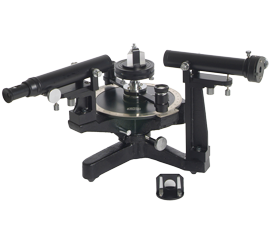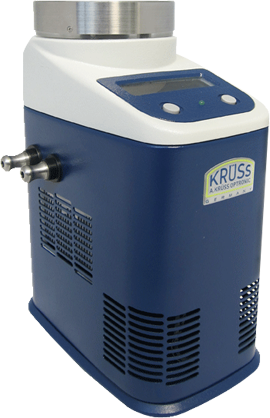Exact measurement of optical data on prisms
Krüss offers the model 1836 Spectrometer-Goniometer, for the exact measurement of optical data on prisms. It can also be used as a spectroscope, for qualitative examination and measurement of emission and absorption spectra. The observation tube has combined coarse and fine drives, infinitely variable, cross-hairs, eyepiece vernier accuracy, plus 1 minute of arc objective: 18 mm/160 mm. The Prism offers Flint glass (60deg) with a dispersion angle C-F=2deg. The scale tube is a symmetric precision slit of hardened steel. Accessories include prism, Rowland grating and holder, scale illumination, lamp, ocular and spectra sheet.
![]() For full technical specifications, please download the brochure here.
For full technical specifications, please download the brochure here.
For prices and availability information on the 1836 Laboratory Spectrometer, please contact your nearest Krüss distributor, who will be delighted to help.
How does a spectrometer work?
The spectrometer remains one of the easiest to understand, and yet among the most powerful of all scientific instruments. Its development has played a large part in the development of science itself. The basic laboratory spectrometer has changed little in its configuration since the early 19th century, and yet it remains indispensible for education as well as practical research.
The incoming or incident light ray is collimated – made into a parallel beam – either by passing through a narrow slit or by use of a collimating lens. It is then diffracted, using a prism or a diffraction grating, and the resulting spectrum can be observed. By careful measurement of the position of the receiving optics, an accurate measure of wavelength can be made and, using the considerable spectral knowledge that has been collected over two centuries, identification of materials can be made.
Elements have unique spectra, which can be thought of as their fingerprints, generating bands of specific colour in the receiving optics. Perhaps the best-known of these is sodium, which generates a distinctive pair of closely-spaced spectral lines at a wavelength of about 589 nanometres. These lines are just 0.6 nanometres apart, and their resolution as a pair of lines – rather than a single line – is an age-old test of the optical quality of a simple spectrometer.































